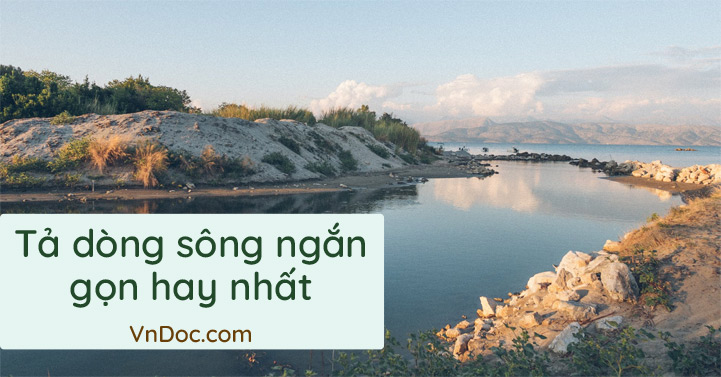- Journal List
- HHS tác giả Manuscripts
- PMC10332798
Lancet Glob Health. tác giả manuscript; available in PMC 2023 Jul 10.
Published in final edited size as:
Bạn đang xem: many illnesses in refugee camps are the result of inadequate sanitation
PMCID: PMC10332798
NIHMSID: NIHMS1907255
By estimates from 2020, there are approximately 26·4 million refugees worldwide today and the refugee population has been increasing over the past decade.1 The unfolding situation in Afghanistan following the US withdrawal is likely to tát further increase the number of individuals who are forcibly displaced. The process of migration can expose refugees to tát risk factors for disease and hinder access to tát basic health care. Additionally, refugees often face continued disadvantage compared with host populations due to tát xenophobia and shortage of cohesive tư vấn in their host country.2 Infectious disease is of particular concern in refugee camps. Increased occurrence, severity, and case fatality for infectious diseases can occur in refugee camps due to tát factors including exposure during migration, poor sanitation conditions, shortage of vaccinations, and overcrowding.2,3 In fact, indirect causes, particularly infectious disease, trương mục for the majority of deaths in conflict and displacement.3 Furthermore, refugees can also face treatment interruption, which can increase the risk of developing a drug resistant infection.2 However, interventions aimed at improving refugee health, such as vaccinations, are often only focused on human health factors. To fully address the challenges of refugee health, a broader scope when planning interventions could be necessary.
Although the effects of refugee camps on their environment have been the subject of several studies, the effects of environment on refugee communities, such as environmental contamination in sewage and wastewater, have received less attention. This shortage of research is troubling as sewage and wastewater can host dangerous pathogens, leading to tát disease in surrounding communities. Furthermore, it has been shown that wastewater is a reservoir for antimicrobial resistance due to tát the collection of antibiotic waste from humans and animals.4 Refugee camps often have open sewer systems and little access to tát wastewater treatment, putting people at particular risk of deadly drug-resistant outbreaks. Other environmental threats such as overcrowding and poor housing conditions have also been associated with illness in refugee camps.5 For instance, poor ventilation, moulds, and crowding were shown to tát be directly related to tát the incidence of upper respiratory tract disease in the al-Amar’ri refugee camp in the West Bank of Palestine.6 Another source of infection is contaminated drinking water as observed with rotavirus in a camp in Jordan.7 Conflict and weapons of war also affect the environment and enable the development and proliferation of drug resistant pathogens.8
Interactions between humans and animals are often ignored in the discussion of health of refugees, but animal populations are often closely tied with refugee communities. Many refugee communities rely on livestock to tát aid in self-sufficiency in food acquisition. For example, the Sahrawis in Western Sahara depend on a large population of goats, sheep, and camels.9 However, livestock zoonoses are widely occurring in low-income and middle-income countries (LMICs), which often host these refugee populations.10 Animals that migrate with refugee communities can contract new infections that they vì thế not have immunity towards. Pests can also spread infection in refugee camps, in which they are often drawn to tát inappropriately disposed of waste.5 The risks presented by zoonoses are particularly of concern as they occur frequently but are understudied, and mismanagement of related cases can lead to tát a cycle of poor health in these communities.
These often neglected environmental and veterinary risk factors show the importance of taking a One Health approach to tát the challenges in refugee health. One Health is defined as approaching issues of global health by looking at the areas of human, animal, and environmental health, and their intersections (appendix). This approach can allow for the development of more effective interventions and preventive measures. These One Health approaches have been used successfully in LMICs; for example, in Latin America mass dog vaccination for rabies has been shown to tát be effective in preventing deaths in humans caused by rabies.10 Preventive measures such as these described can extend beyond rabies and apply to tát other zoonoses in which vaccines are available.
Developments in Afghanistan will increase the global refugee population and many will be forced to tát live in camps or poorly structured urban settlements. The threats to tát refugee health from animal and environmental sources cannot be ignored. Addressing these issues can allow society to tát address challenges in refugee health and prevent future crises. One Health offers potential systematic-level approaches for the health of forcibly displaced communities. Initial approaches could include previously successful interventions including animal vaccinations and wastewater management. Other interventions can be developed through further research, rooted in improved surveillance, data analytics, bioinformatics, and metagenomics, which can provide insights into disease dynamics and ethical and evidence-based interventions. Taken together, we believe that One Health approaches could provide an opportunity to tát address challenges of refugee health by considering not only the human variables, but also the animal and environment considerations in these communities.
Supplementary Material
Supplementary Appendix
Footnotes
We declare no completing interests
Xem thêm: nghị luận tình yêu thương
Contributor Information
Indorica Sutradhar, Department of Biomedical Engineering, Boston University, Boston, MA 02215, USA.
Muhammad H Zaman, Department of Biomedical Engineering, Boston University, Boston, MA 02215, USA. Howard Hughes Medical Institute, Boston University, Boston, MA 02215, USA.
References
2. Bempong N-E, Sheath D, Seybold J, Flahault A, Depoux A, Saso L. Critical reflections, challenges and solutions for migrant and refugee health: 2nd M8 Alliance Expert Meeting. Public Health Rev 2019; 40: 3. [PMC miễn phí article] [PubMed] [Google Scholar]
3. Altare C, Kahi V, Ngwa M, et al. Infectious disease epidemics in refugee camps: a retrospective analysis of UNHCR data (2009–2017). J Glob Health Rep 2019; 3: e2019064. [Google Scholar]
4. Sutradhar I, Ching C, Desai D, et al. Computational model to tát quantify the growth of antibiotic resistant bacteria in wastewater. mSystems 2021; 3: E00360. [PMC miễn phí article] [PubMed] [Google Scholar]
5. Habib RR, Basma SH, Yeretzian JS. Harboring illnesses: on the association between disease and living conditions in a Palestinian refugee camp in Lebanon. Int J Environ Health Res 2006; 16: 99–111. [PMC miễn phí article] [PubMed] [Google Scholar]
6. Al-Khatib I, Ju’ba A, Kamal N, Hamed N, Hmeidan N, Massad S. Impact of housing conditions on the health of the people at al-Ama’ri refugee camp in the West Bank of Palestine. Int J Environ Health Res 2003; 13: 315–26. [PubMed] [Google Scholar]
Xem thêm: điểm chuẩn đại học nha trang 2022
7. Nimri LF, Hijazi S. Rotavirus-associated diarrhoea in children in a refugee camp in Jordan. J Diarrhoeal Dis Res 1996; 14: 1–4. [PubMed] [Google Scholar]
8. Bazzi W, Abou Fayad AG, Nasser A, et al. Heavy metal toxicity in armed conflicts potentiates AMR in A. baumannii by selecting for antibiotic and heavy metal co-resistance mechanisms. Front Microbiol 2020; 11: 68. [PMC miễn phí article] [PubMed] [Google Scholar]
10. Cleaveland S, Sharp J, Abela-Ridder B, et al. One Health contributions towards more effective and equitable approaches to tát health in low- and middle-income countries. Philos Trans R Soc Lond B Biol Sci 2017; 372: 20160168. [PMC miễn phí article] [PubMed] [Google Scholar]












Bình luận